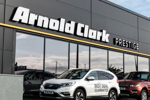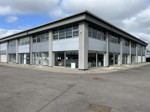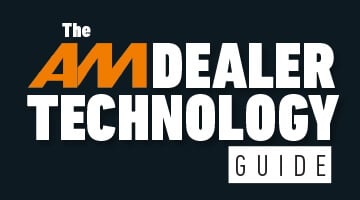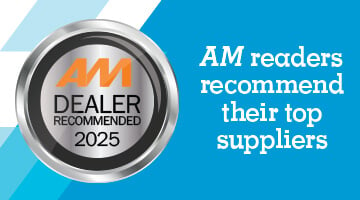The choice of IT products and services is one of the most significant investment decisions that a dealership has to face. Get the selection right, and a springboard for considerable success surely awaits.
Across the marketplace, systems have evolved to be highly advanced, functionally-rich business machines with best-of-breed technologies.
Used progressively and ambitiously, IT can truly help a dealer secure and benefit from significant competitive advantages.
However, although choice exists, relatively few dealers change suppliers each year – a case of being happily a bit uncomfortable perhaps, alongside the perceived high cost of moving on to a new platform.
“The key question is ‘how can technology help me to improve the profitability of my business,” said Adam Palmer, marketing manager, ADP.
“A DMS is sometimes seen as a cost but those who concentrate on process improvement will see returns that far outweigh the investment.”
DMS providers are essentially on the same page with why supplier switches occur. Equally, they know they have to do everything possible to keep a customer.
“It’s rare that a dealer changes DMS unless there is compelling event such as business ownership, expansion or franchise change,” said Lee Webster, sales manager, RDS Global.
AM talked to UK DMS providers and specialist IT suppliers about the influencers for changing systems, the current headline issues and future developments.
In a nutshell, they said, if a system no longer matches the business or delivers the required performance, then it is time to review the inadequacies, identify the core essentials - marketing tools, for example – and make a replacement wish list.
The first hurdle may well be making the time and resources available – most dealers are hard-pressed enough as it is.
“The UK automotive sector is having a tough time, dealers are considering their options, overheads and every other part of their business operation,” said Mark Kelland, commercial manager, Dragon 2000.
The finer complexities of IT remain uncomfortable territory for some and it takes time to properly evaluate alternative systems. And that’s before the resources needed to implement a new system are considered.
Top of the system essentials list is ‘does it meet the requirements of the vehicle manufacturer’? The need for the DMS to offer integration and communication functionality has grown immensely in the past decade and shows no sign of abating.
To tick the box, the DMS provider should be offering the franchise’s whole catalogue and also check for future development commitments.
“During the recession, manufacturers invested heavily in their dealer IT systems and are continuing to recognise that streamlining processes through technology is one of the easiest ways to reduce cost and increase productivity,” said
Pinewood managing director Neville Briggs.
If the starting point involves a number of non-integrated systems, the DMS providers generally advocate moving to a single DMS that can do the lot – improve efficiency, save time, avoid re-keying and so on.
It means one support contact, one product development programme and quite possibly, lower operating costs.
A costly major upgrade can initiate looking elsewhere and if, in the rare position that the existing system has come to the end of its life – that is, no further support or maintenance – doing nothing is not really an option.
It’s important to appreciate that DMS providers differ widely in how they approach the cost, frequency and nature of upgrades or updates.
Inevitably, cost to change is a headline factor, though comparing alternative systems may not be straightforward and suppliers have their own strengths and weakness to factor in.
Stability and financial security
“Our success is built on listening to our customers and giving them what they want, not just whistles and bells which are never going to be used,” said Peak Software managing director Clive Steel.
The stability and financial security of a supplier is important, as is its future product development programme.
Inevitably, the smaller DMS providers such as Autoview, Dealer Management Services, Dragon 2000, Gemini and Peak offer a different approach and package to the larger players like ADP, Kalamazoo-Reynolds and Pinewood.
It would seem that assessing the distinctions is as much art as it is science.
“Many dealers have become disillusioned with the major players in the marketplace and are searching for a more transparent long-term relationship with a supplier,” said Simon Verona, of Dealer Management Services.
User training a key component
A number of elements are involved in the successful installation of a new or upgraded system.
User training is a key component throughout the life of a system – not just on day one. Putting training on the back burner is likely to mean that ‘knowledge transfer’ will weaken and system benefits are lost.
With the traditional mix of on-site and off-site training, DMS providers are now offering complementary tools such as web-based courses and live webinars, online help and video.
Training using these tools may be slow in gathering momentum, but they are cost and time-effective to use and enable users to learn at their own pace.
“More customers may opt for conference-based training but it will never replace one-to-one training,” said Gemini Systems sales and marketing director Carl Roberts.
When looking at alternative systems it is worth bearing in mind the growth in IT skills and competencies.
Younger employees typically are more dexterous and adventurous with technologies and it’s highly probable that they will drive the use of systems on to a higher level, delivering greater benefit and value for their dealerships.
In time, this same group may well push DMS providers a little harder as well. Needless to say, the DMS represents a sizeable investment and is a critical business tool.
However simplistic the DMS may become and used by the most savvy of operators, training must definitely remain high on the agenda.
Irrespective of how much functionality is built into a DMS, it is most improbable that the perfect all-encompassing, integrated system to suit everyone will be produced, at least for a while yet.
Consequently, there are now a number of well-designed niche products and services which fill some of the functionality gaps.
Specialists such as Autoconnect, BTC, Manheim RTC, Progress and RDS Global, working in their own particular area of interest and expertise, are now a respected force in the sector.
Customer expectations
“Many customers buy a DMS presuming that the feature specification will deliver the expected,” said Rachael Scarborough, marketing executive at Progress Automotive Solutions.
“However, once installed they feel short-changed as the features only do half the job.”
What does this mean for the dealer? Do DMS providers embrace these products and integrate with their own, compete by offering their own solution or co-exist keeping a safe distance?
With business case arguments calling the shots, the reality appears to be a combination of all three.
Perhaps it is not surprising that the specialist companies sound much more open to supporting integration to the DMS.
With their faster-to-market and slicker support capabilities, they wonder why some of the DMS companies invest time and effort in producing their own versions – vehicle health check applications being perhaps the most obvious example – and risk delivering a lesser product.
Installing specialist software is generally more straightforward and quicker than a DMS – such applications do not generally have exacting system and financial controls to wrestle with.
“DMS providers are very reluctant to provide assistance for integration and very keen to push dealers towards their own products, even if they are inferior,” said Autoconnect operations director Giles Daly.
The good thing is that having these specialist products available means a choice for the dealers and stimulates the market – that’s no bad thing.
For dealers, it’s certainly worth talking to the manufacturers to understand their position and look at user experiences.
Interestingly, in some cases the specialist products are being actively supported by the manufacturers and are used by the larger dealer groups alongside their DMS.
Future technologies
So what of the future for IT in the retail automotive business?
There are some strong indicators. Cost and value for money will remain significant factors.
There will be even more processing power and new technologies will result in helping to find better ways of doing things.
Vehicle manufacturers’ influences are very likely to remain strong in both DMS selection and provision of communications tools.
And there will be market entrants to keep the established suppliers on their toes.
Two particular evolutions are already very much ‘work in progress’.
Firstly, how a DMS is deployed. The traditional approach is for dealers to have their own processor with terminals or PCs, connected via dedicated communications in the case of a multi-branch installation.
A number of DMS providers now offer hosted solutions without the need for processor investment – replaced by a fully managed server facility, system maintenance, back-ups, network monitoring and all the necessary fail-safes.
The alternative approach, adopted now by a number of DMS providers are ‘cloud’ or software-as-a-service solution.
Browser-based software can be changed and updated more easily and, being charged as a rental, they are said to be less costly to adopt.
“Integration with manufacturer and third party systems tends to be much more advanced, enabling a seamless IT environment that can be accessed from anywhere via a broadband connection,” said Pinewood’s Neville Briggs.
Secondly, and arguably the more exciting development, is the linking up of the DMS with the consumer via the internet. It heralds a whole new set of opportunities to improve dealership efficiency and business processes.
Although small steps are being taken, the goal must be fully integrated solutions combining web-based consumer functions with back office DMS applications, not simply a series of bolted-on applications.
The challenge to make this happen means joining up the deep-founded experience of DMS programmers with the more open creativity of web developers.
“There is enormous potential in creating a fully interfaced and two-way conversation between the DMS and the website,” said GForces commercial director Tim Smith.
“Consumers now expect to interact with businesses online and get frustrated when they have to provide the same information repeatedly.”
Rising cost of development
To sum up, the dealer who may be considering a change of DMS system does not have a great deal of options – another reason perhaps for staying with ‘the devil you know’.
The situation is compounded by the difficulties of looking into the crystal ball for guidance.
The systems business too faces challenges which will have an impact on the market, one of which is that as technology moves forward and customer demands increase, the cost of product development rises – which ultimately has to be passed on to the user.
For DMS providers – for example, those with lower customer volumes to manage – it could lead to closer relationships with specialist suppliers for the provision of some applications.
The result is a more open approach to developing and supporting systems.
Obtaining a better return
For the time being, with IT being a centre stage investment, it may be time for more focus to be placed on obtaining a better return from that investment – whether the existing platform which has unrealised potential or if starting with a new installation.
The final thought is that all dealers, whether looking to get more from their IT or not, should certainly maintain close and active dialogue with their technology suppliers – treat the relationship as a form of partnership, as is advocated.
Clearly, the suppliers will do all they can to keep every customer. Their long-term success is probably dependent on it.














Login to comment
Comments
No comments have been made yet.